The Partner Determination Procedure, accessed through the transaction code VOPAN, is a fundamental process in SAP Sales and Distribution (SD) module. It plays a pivotal role in identifying relevant partner functions within the Customer Master, a critical element in managing customer relationships effectively. This article will provide a comprehensive guide to understanding and configuring the Partner Determination Procedure in SAP SD.
Introduction to Partner Determination Procedure
In SAP SD, the Partner Determination Procedure is a configurable method to identify which partner functions, such as Sold-to Party, Ship-to Party, and others, are applicable for a particular customer. This procedure is vital for customizing customer interactions and ensuring the accuracy and consistency of data management.
Path for Partner determination in SAP SD – VOPAN
To begin with, the procedure can be accessed by navigating through the SAP menu: SPRO → Sales and Distribution → Basic Functions → Partner Determination → Set up Partner Determination.
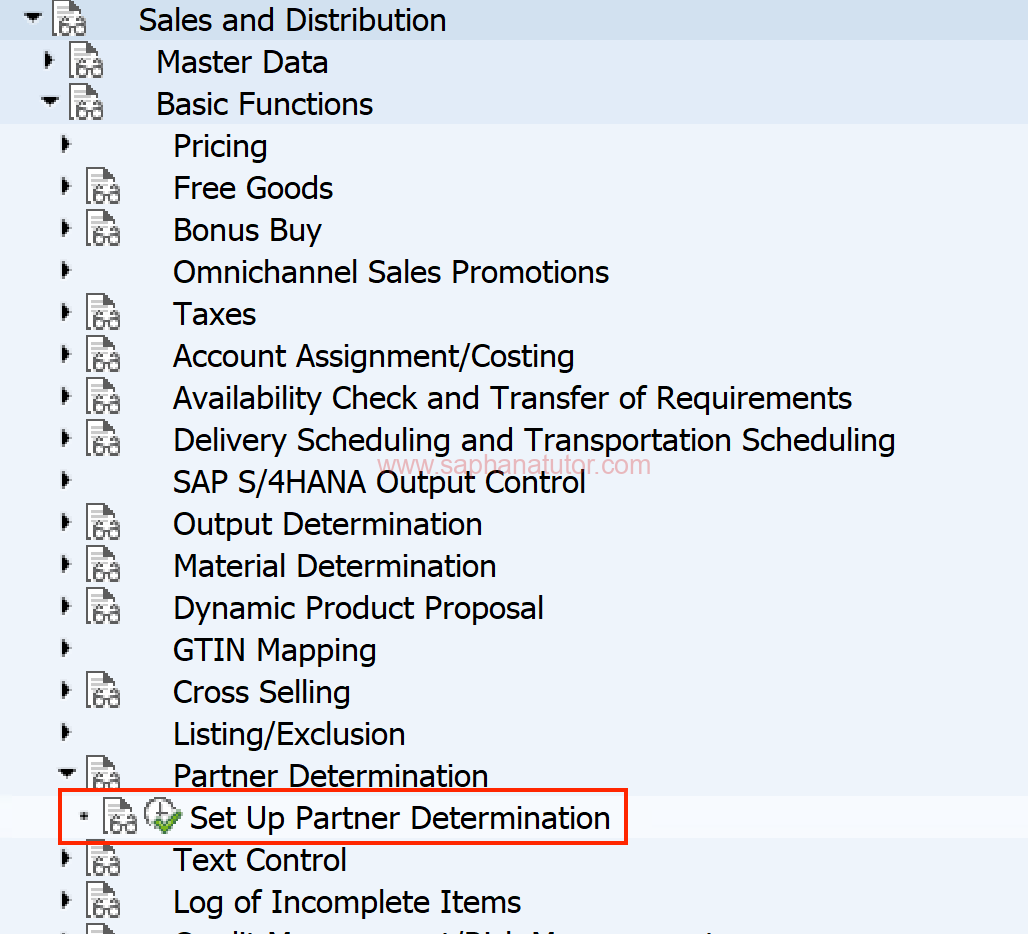
- Transaction code VOPAN
This pathway leads to the modification settings for the Customer Master, where the Partner Determination Procedure is configured.
Configuration for Partner Determination Procedure.
- Define Partner Functions.
- Partner Determination Procedure.
- Partner Functions in Procedure.
- Assigning Partner determination Procedure to Account Groups.
- Assigning Partner Functions to Account Group.
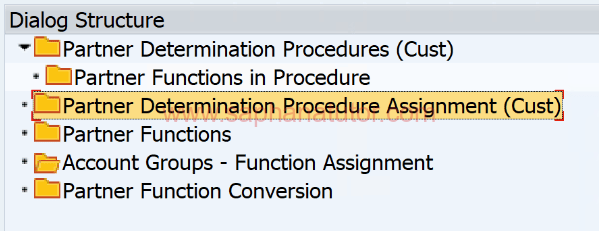
Step-by-Step Guide to Configuring Partner Determination in SAP SD
Step 1: Define Partner Functions
To begin configuring your SAP system, let’s first establish the various partner roles within your business process. We focus on four main functions:
- Partner Functions: Here, we assign the roles SP (Sold-to Party), SH (Ship-to Party), BP (Bill-to Party), and PY (Payer).
- Partner Type: For each of these functions, select ‘KU’ (Customer) as the partner type. This designation is crucial for identifying and categorizing your business partners correctly.
- Unique Checkbox: A critical setting here is the ‘Unique’ option. If you mark a partner function as ‘Unique’, SAP ensures that you cannot assign more than one of this type to a single customer in the customer master. This feature helps maintain data integrity and avoid duplication.
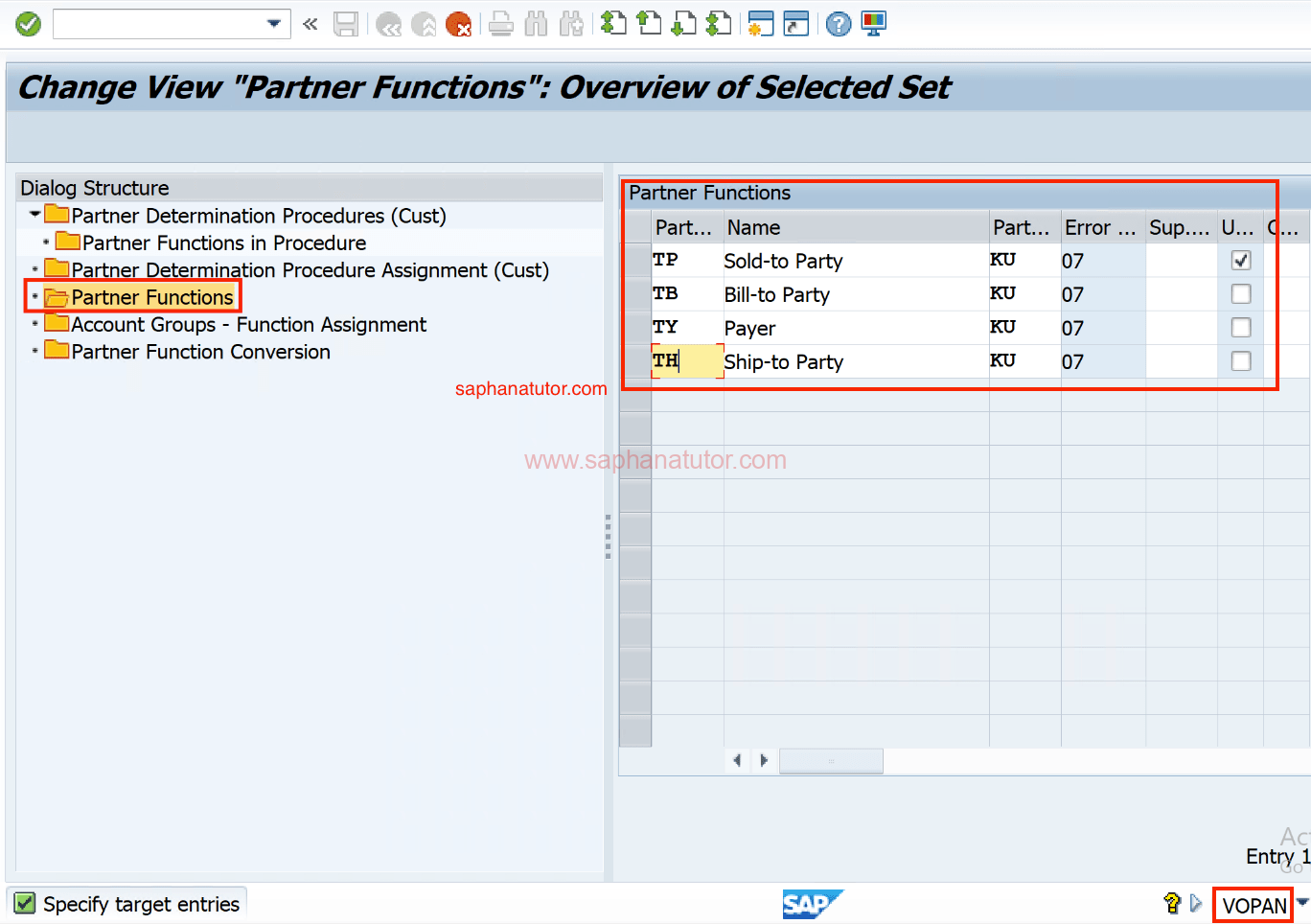
- Save the settings with your customising request number in SAP SD.

Step 2: Configure Partner Determination Procedure
Next, we’ll create a framework for how SAP determines the relevant partners for each transaction:
The default Partner Determination Procedure for the sold-to party is usually “SP”. To tailor this to your business needs, you might want to define a custom PDP, such as “ZSAH” (e.g., saphanatutor.com PDP). This is done by adding new entries under the PDP configuration and saving your changes. Customizing your PDP allows for greater flexibility and specificity in handling customer data.
- Enter ZSAH as partner determination procedure (PDP), enter name and save the settings.
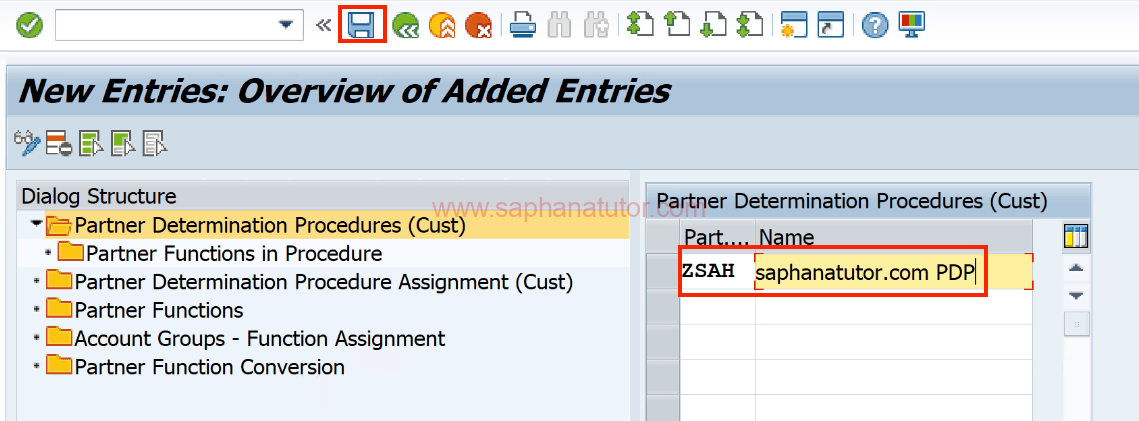
Step 3: Assign Partner Functions to the Procedure
Choose your Partner Determination Partner “ZSAH”, and add the partner functions (TP, TH, TB, TY) that we created in the step1.
– Additionally, use the ‘Mandatory’ option for essential partner functions. This ensures that the system prompts for these functions when saving customer master data, thus enhancing data completeness.
Select your PDF (ZSAH) and click on Partner Functions in Procedure to add partner functions (TP, TH, TB, TY).

- Go to new entries to add partner functions (TP, TH, TB, TY).
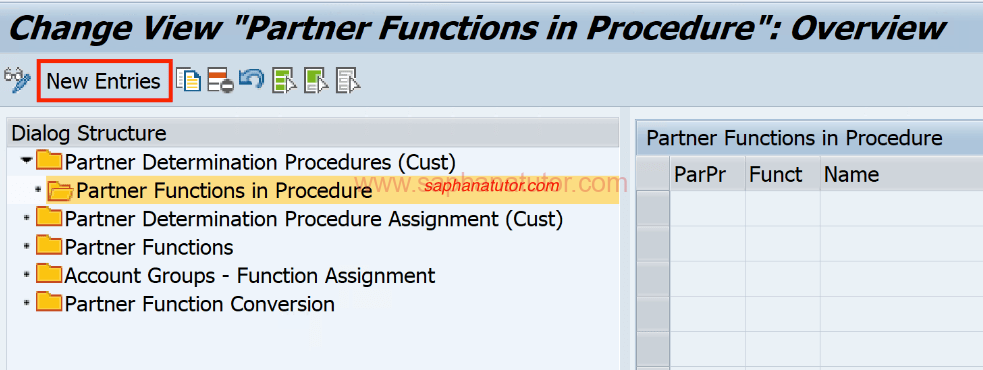
- Assign the ‘Not Modifiable’ status to specific partner functions. This setting is pivotal for controlling data modification within the system.
- For instance, in a sold-to party PDP, set Sold to Party as ‘Not Modifiable’.
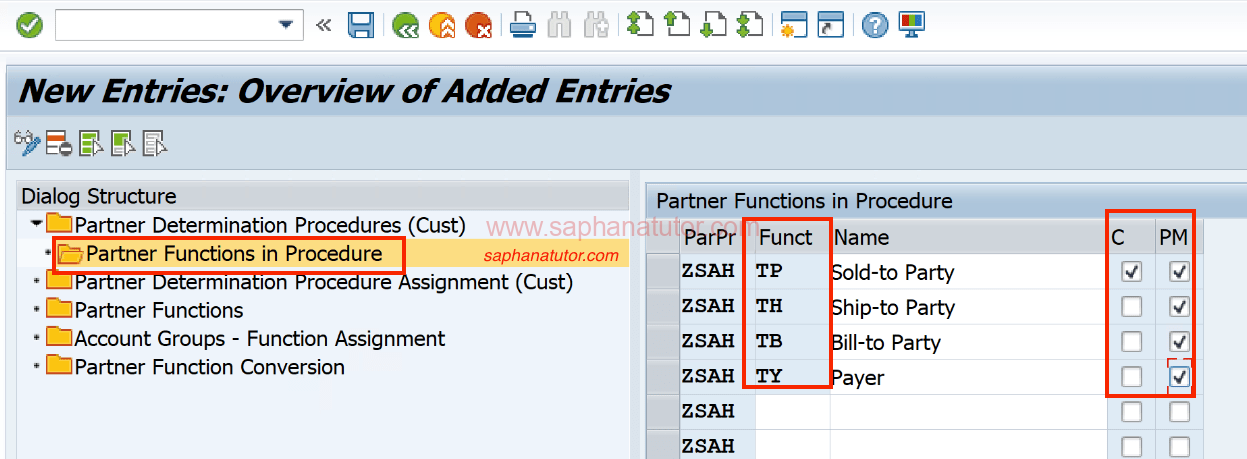
Step 4: PDP Assignment to Account Group
Moving forward, integrate your PDP with the corresponding customer account group.
- Select Partner Determination Procedure Assignment > New Entries.
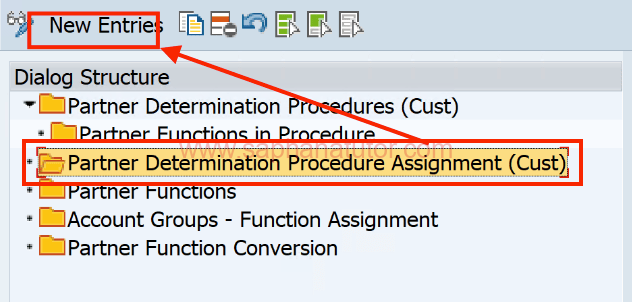
Assign your custom PDP, “ZSAH“, to the designated account group (ZSAH). This alignment is vital for ensuring that your customer records are correctly associated with the established partner determination rules.

Save the settings with your customising request number as shown below.

Step 5: Link Partner Functions to Account Group
In the last of Partner Determination configuration, we have to bind our partner functions to the Customer account group.
- Go to New entries to link partner functions and Account Group.
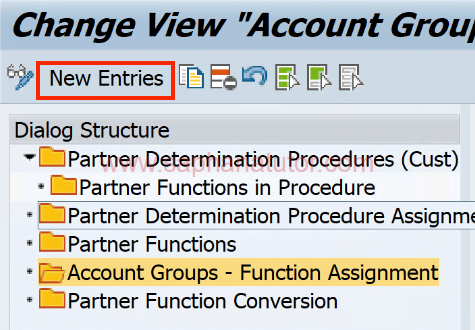

– Then, assign each partner function (TP, TH, TB, TY) to your customer account group, such as ZSAH, and save your configurations. This final step solidifies the relationship between your account groups and partner functions, ensuring consistent application across your customer base.

Conclusion
By configuring these settings in SAP SD, businesses can create customer profiles with specific Account Groups, ensuring that partner functions like Ship to Party, Payer, and Bill to Party are determined according to the unique business requirements. This structured approach within SAP greatly enhances the efficiency and accuracy of customer data management, playing a significant role in optimizing sales and distribution processes. The Partner Determination Procedure, therefore, is not just a technical configuration but a strategic tool in managing customer relations effectively.
